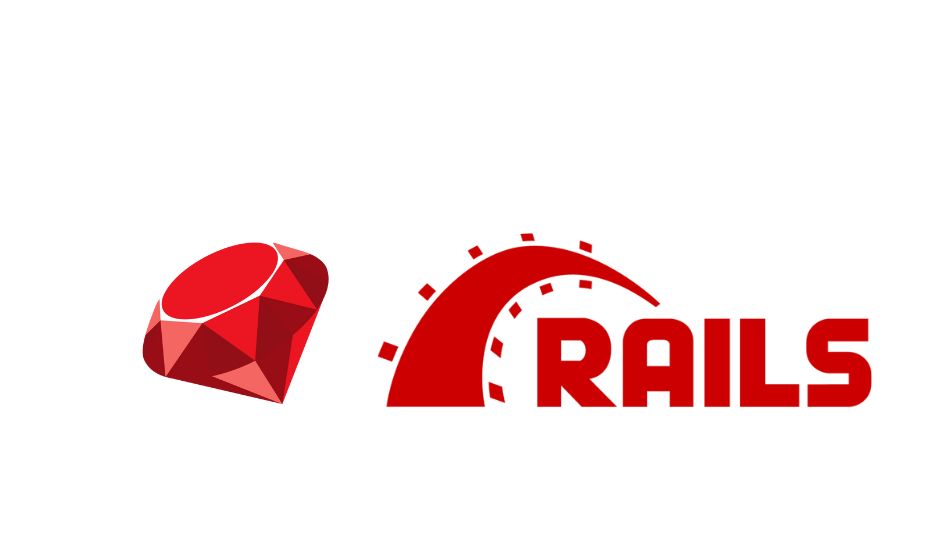What Is Ruby on Rails and Its Key Features

Web apps are necessary to many companies across industries because they allow customers to interact with businesses and use their products effectively. And Ruby on Rails development is the perfect option for building web applications.
Among the critical aspects of web development, productive frameworks are one of the main ones today.
Conceptually, Ruby on Rails development provides an innovative development environment with many components. This allows developers to improve the performance of web applications.
Ruby and Rails are two different things that provide an effective development tool when combined.
Ruby is one of the popular general-purpose languages, like C++ or Java. At the same time, Ruby’s functionality is best suited for web development.
Rails is a software library that is used to extend Ruby. We can say that Ruby would be irrelevant without Rails, so this language and library is usually considered one — Ruby on Rails.
Let’s take a closer look at what Ruby on Rails is and its core features.
What Is Ruby On Rails
Ruby on Rails is an open source web programming framework which is built around the Rails library. Therefore, this milieu is a perfect ground to develop the Web Applications as well as provide developers with some time saving.
Thanks to a set of code libraries, developers can use predefined solutions for routine tasks like various tables, forms and menus.
Also, Ruby on Rail includes JavaScript, HTML, and CSS in order to develop web applications that are executed at the server level. This has made Ruby on Rails mainly referred to as a back-end or server-site web application platform.
In terms of concepts, Ruby on Rails can be seen as an equivalent of PHP in Laravel and Python’s Django. The development environment is favorable with many developers owing to ease in use of language and conciseness that is suitable for agile development enhancing their productivity increasing their flexibility as a team.
Core Features Of Ruby On Rails
Ruby on Rails is a powerful tool because it fulfills both the back-end and front-end requirements ideal for building complete web applications.
Not only that, but it also enhanced the realm of web development by integrating programming language as well as a libarary. One reason that Ruby on Rails is so popular among web development companies is that it allows for development in “hands-on” mode and has numerous helpful functions, which are always present there.

Key features of this web application framework include:
MVC
Ruby on Rails uses the MVC architecture, known as Model, View, and Controller. This means that developers who have used other platforms that include the MVC architecture can easily migrate to Ruby on Rails.
In addition, this type of architecture separates the codes of various functions so developers can interact with presentation, data, and maintaining resource layers, making Ruby on Rails a convenient framework.
Automation
Ruby on Rails has automated deployment. This means that the libraries that come with Ruby on Rails allow developers to move on to creating code with less effort and time.
With this approach, it deploys every change after a single initial setup. Therefore, changes made to the environment can be deployed with just one line of the command interface.
Read Also: Ways To Leverage AI and Automation in Web Development Projects
Active Record
One of the key Ruby on Rails libraries is active record. Its core value is that it simplifies the development of database interaction queries.
With this approach, a query written in Ruby is automatically converted to an SQL query by receiving the output.
With active records, developers don’t have to use a query in SQL all the time, as this library does most of the work.
Simplicity
Ruby on Rails is a simple programming language. Due to the Ruby syntax, which is concise, close to English, and flexible, the task for the developer becomes easier.
Also, being an object-oriented programming language, Ruby allows you to create virtual objects in your code. In some cases, developers may use colloquial language instead of a character, such as typing “puts” instead of a semicolon.
This approach increases the efficiency of writing code, saves time, and contributes to higher developer productivity, especially in the case of long and complex functions.
RSpec
RSpec is a unit testing setup that comes with Ruby on Rails.
This unit testing setup is easy to understand for most developers and can also be applied to test every single feature used in the application. Thus, RSpec allows an application’s extensive testing to ensure its stable operation and performance.
Configuration Files
Among the key benefits of Ruby on Rails for the developer is that it avoids configuration files. This includes spare conventions, reflection, and dynamic runtime extensions. With this approach, the value is automatically assigned without user intervention.
While other web application frameworks require multiple configuration files, Ruby on Rails avoids them, saving time and effort. Thus, the convention feature contributes to higher performance since the developer does not need to cope with configuration files here.
Final Thoughts
Ruby on Rails is a perfect alternative to many web development frameworks. Due to its practicality, library, and simplicity of the programming language, Ruby on Rails is easy for developers to learn, making it an attractive option for building web applications.
In addition, the platform’s functionality leads to a reduction in time and effort for the development team, allowing them to implement projects faster.
Learn more about Ruby on Rails at Ralabs.




